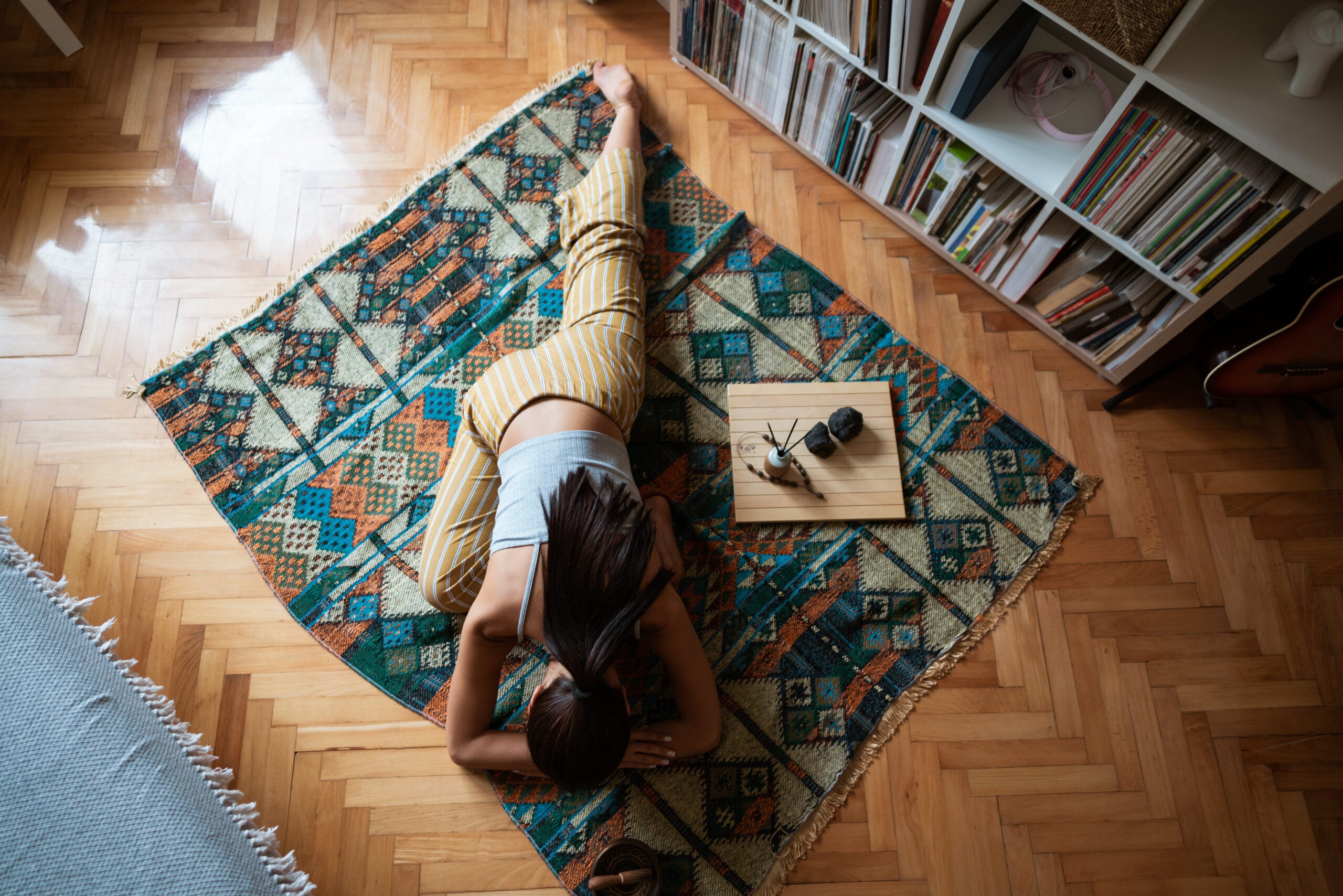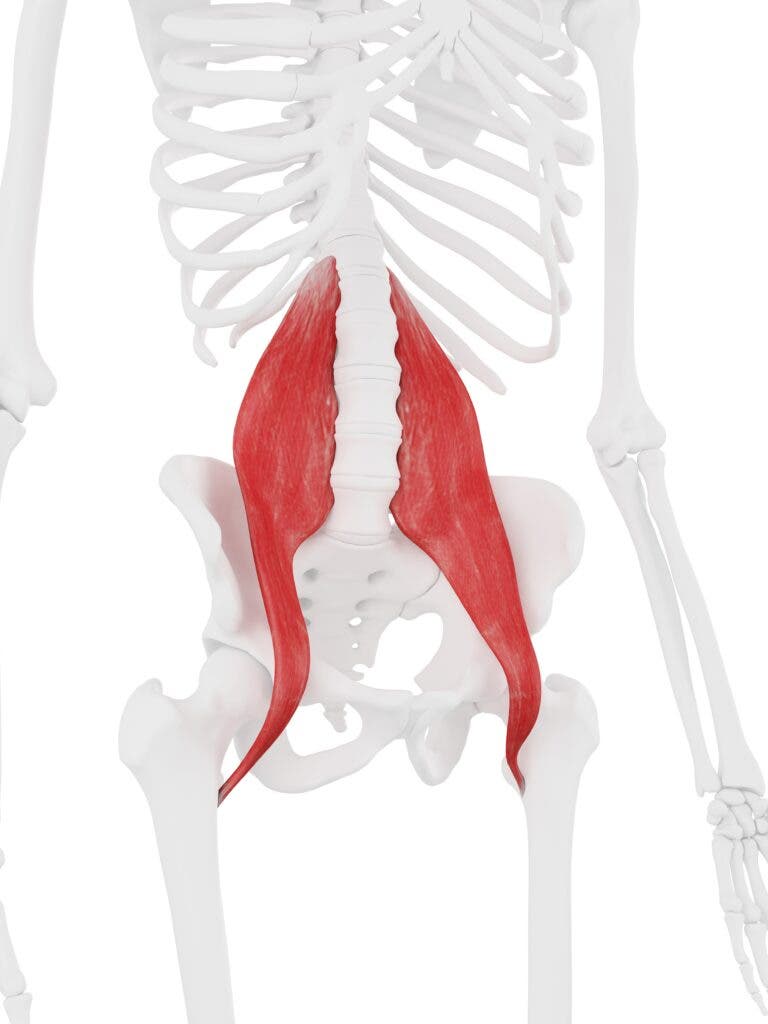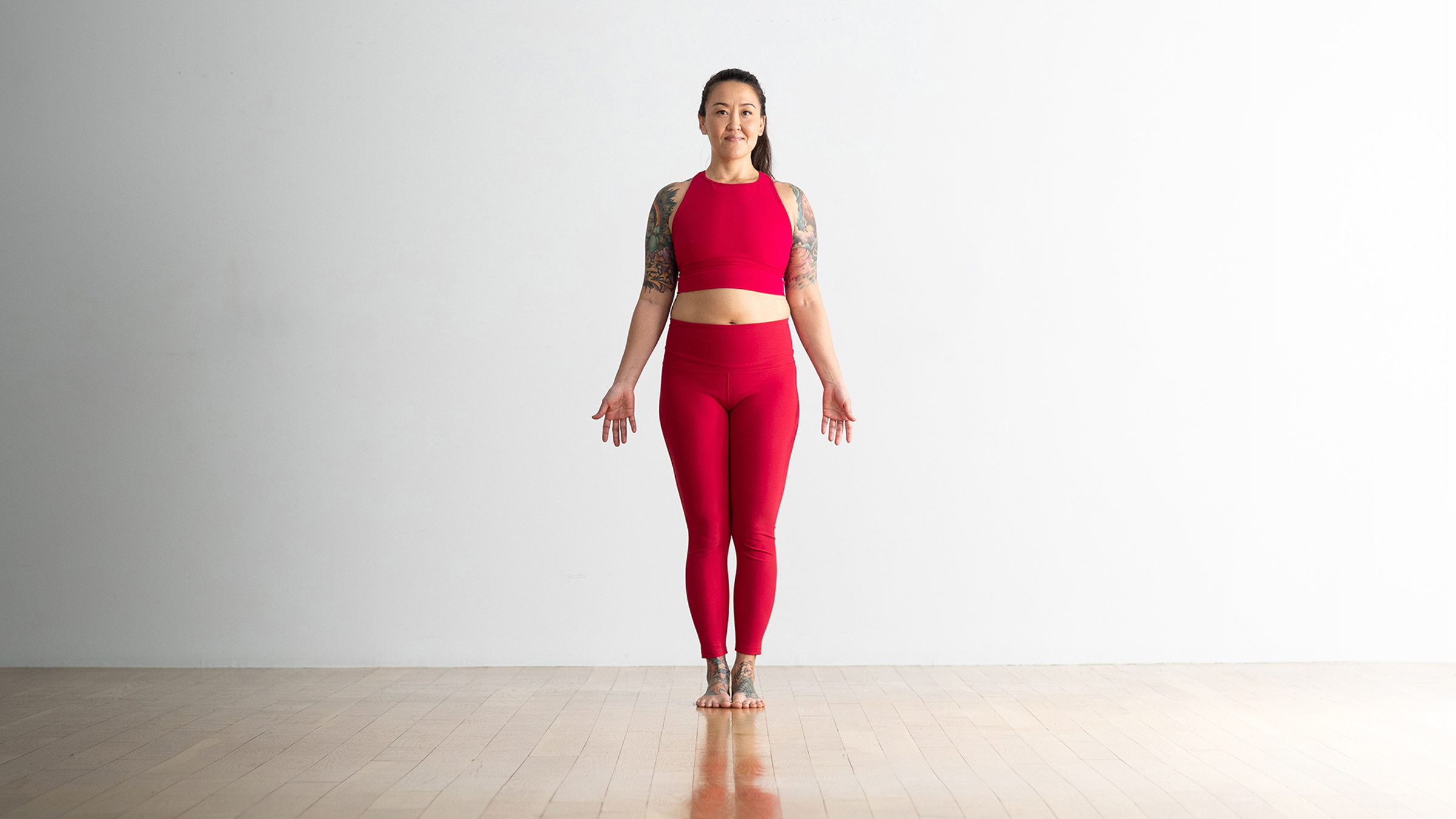7 Poses That Help Release Your Psoas

(Photo: Srdjan Pav | Getty Images)
Your first thought when you experience tightness in your back or hips may not be your psoas muscle, but it’s often the culprit. It can be difficult at first to access the psoas, which is buried deep in the body and engaged in habitual patterns of tension, especially when you’re sitting or standing. But with practice and patience, you can discern how to release not just the physical tightness but the emotional tension it holds. This yoga for the psoas muscle sequence can help with that.
Anatomy of the Psoas
Your body has two psoas muscles on either side of your spine. They run from the back of your ribs down to the tops of your femur bones.

The psoas is considered a deep core muscle, and it works with surrounding muscles to perform the following actions:
- Flexing your hip joints
- Maintaining upright posture
- Supporting your legs when you walk, run, or climb stairs
Yoga for the Psoas Muscle
When you practice yoga for the psoas muscle and bring your attention to the subtle sensations within your body, you’ll start to notice more ease in your back and hips in everyday movements.

1. Constructive Rest Position
Rather than trying to instantly correct all the imbalances and habitual compensations you’ve developed throughout your life, begin practicing yoga for the psoas muscle with a constructive rest position. Let gravity do the work.
How to:
- Lie on your back, bend your knees to about 90 degrees, and place your feet on the mat in line with your hip bones. Be careful not to flatten or exaggerate the curves in either your lumbar (lower back) or cervical (neck) spine. Rest your hands on your rib cage, palms facing down, or bring them to the floor as you would in Savasana, palms facing either up or down.
- Shift your awareness to the weight of your body sinking into the mat. Take note of any part of your skeleton that feels as though muscular contraction prevents the bones from surrendering to the pull of gravity. As your psoas continues to release, the distribution of weight will start to feel increasingly even throughout your body.

2. Active Supine Stretch (Ardha Apanasana)
This pose actively lengthens the psoas muscle of your straight leg. If you experience pain or tension in your lower back, skip this pose and return to constructive rest instead.
How to:
- Start from constructive rest position and keep both knees bent as you lift your right thigh toward your chest. Hug your right leg by grasping your shin or wrapping a strap or belt around your shin and hold on to either end of it. Be mindful not to lift your pelvis off the mat as you move your right leg.
- Slowly inch your left foot farther away from your hips. As your leg extends, keep your awareness on the front of your left hip socket and release any tension.
3. Pigeon Pose (Eka Pada Rajakapotasana)
In this stretch, you isolate the psoas and iliacus muscles attached to your back leg in a targeted stretch.
How to:
- Start on all fours. Bring your right knee forward between your hands, and bring your right buttock toward the mat. Extend your left leg straight behind you and rest the top of your foot on the mat. Make sure you keep your hips as level as possible. If your right hip is lifted off the mat, you can place a folded blanket, block, or pillow under your right sitting bone to keep your pelvis level. Don’t let your right glute roll onto the floor. As you continue to extend back through your left leg in Pigeon Pose, you shouldn’t feel tension in your lower back. The release and stretch should begin where your psoas crosses your hip at the front of your left thigh and you should feel an upward extension through both the front and back of your trunk. Pause here for several breaths.

4. Easy Pose (Sukhasana)
Now that you’ve discovered how it feels to release and lengthen your psoas, try a cross-legged Easy Pose to illuminate the proper use of the psoas in seated postures, which is resting on the front of your sitting bones, with your knees lower than your hips. This relationship between knees and hips is critical in all seated postures because it allows your psoas to open at the front of the hip; in turn, this opening allows a release of tension throughout your legs and lower back.
You shouldn’t have to use muscular tension to hold yourself up. If you feel as though your spine collapses without these actions, if your weight is still placed behind your sitting bones, or if your knees are still higher than your hips, continue to add towels or blankets beneath your sit bones until you find the sensation of support that accompanies proper alignment.
How to:
- Sit on a folded blanket. Bend your right leg and draw your right heel toward your upper left thigh. Bend your left leg and draw your heel toward your right shin in a cross-legged position or you can stack your left ankle on your right heel. Begin to turn your attention inward. Does most of your weight fall behind your sitting bones, or in front of them? If your weight is balanced on your sitting bones, is it more toward the front of the bones or the back? Try to shift your weight onto the front of your sitting bones, lifting off the blanket and adjusting as needed. continue to add towels or blankets until you find the sensation of support that accompanies proper alignment. When your pelvis is stable and your skeletal structure is free to align properly, sitting feels effortless. You shouldn’t have to use muscular tension to hold yourself up. As the psoas lets go, you are shifting from a familiar feeling of controlling your posture with muscles to an unfamiliar feeling of relying on your skeleton for support. Since it’s new, the sensation may feel a bit scary—or you may feel relief as you let go of unnecessary muscular contraction.
5. Standing Release
Maintaining a released psoas can be challenging in standing postures. Biomechanically, standing on two legs is a very complex task, and many of us have developed habitual—but less than optimal—patterns of muscular contraction to help keep us upright. Fortunately, there’s an exercise that allows you to discover what it feels like to relax your psoas while standing.
How to:
- Take a block or thick book and place it 12-16 inches away from a wall.
- Stand on the block or book with your left foot, supporting and balancing yourself with your right hand on the wall. Let your right leg and foot hang completely released.
- Gently swing this leg back and forth like a pendulum, taking care not to let the trunk bend or twist as your leg swings. (If your pelvis is torquing, you’re going beyond the released range of motion of your psoas.) See if you can sense the pendulum movement deep within your torso; it should begin at the very top of your psoas at your 12th thoracic vertebra, behind your solar plexus.
- After you swing the leg for a few minutes, step down from the block and see if your two legs feel different. You’ve released the psoas attached to the swinging leg, and most likely this leg will feel longer, freer, and more relaxed.
- Now reverse your position and swing the other leg. This time focus not only on the leg you’re swinging, but also on the standing leg. Check to make sure you’re not leaning into the standing leg hip. Try to sense your weight passing directly down through your leg and foot and into the block. Even though this leg is now bearing weight, you can release the psoas by bringing your awareness to the front of the hip socket and softening any tension you notice there.

6. Mountain Pose (Tadasana)
Now let’s investigate Mountain Pose. When you’re standing with your joints aligned, you’ll feel a slight sensation of rebounding from the earth, just as a ball dropped to the floor bounces up again. This rebounding force creates a current of energy that aligns the body, flowing up through your spine and out the top of your skull. If your pelvis doesn’t feel stable and even, try returning to constructive rest position and the supine psoas stretch.
How to:
- Stand with your feet directly underneath your hip sockets and become aware of any sensations. Does your pelvis feel like a stable foundation? Are both hips level? Do both your legs transfer weight equally? Are you grounding equally through both feet? If your answer to these questions is “Yes,” your psoas should feel released, and you should be able to sense gravity drawing your weight down through your bones.
- After a few minutes of releasing the psoas and stabilizing the pelvis, return to Mountain Pose and notice if you feel more balanced.

7. Tree Pose (Vrksasana)
Moving with proper alignment from Mountain Pose into Tree Pose requires that you continue to sense this connection between your standing leg and your spine, even as you shift all your weight onto one leg and lift the other.
How to:
- Stand in Mountain Pose. Shift from grounding your weight through both feet to bringing it all onto your right foot. Avoid leaning all of your weight into your right hip. Instead, keep your hip knee, and ankle in alignment, allowing the hip socket to remain released and the right-side psoas to relax.
- Release any tension in the left psoas. Then lift your left leg and place the sole of the foot as high as possible on the inner right leg. Again, make sure you don’t lean into your right hip as you lift your left leg. You can place your hand on a wall or chair to help you maintain balance.
- If you feel stable in Tree Pose, you can add your arms to the pose. To avoid contracting your psoas as you raise your arms, bring your attention to your solar plexus and the back of your rib cage. Release any rigidity you feel in these areas. Aim to soften and widen equally across the front of your chest and across your back, especially in the area between your shoulder blades. If these regions already feel open, straighten your arms, rotate them outward, and sweep your palms up above your head. If you detect any stiffening in the area of your upper psoas, pause and take your arms a little lower until you can soften the tension you sense in this area.
If you have difficulty sensing this release, return again to constructive rest, with your arms at your sides. After a few moments, fold your arms across your rib cage. With this extra weight, the middle of your torso will rest a little more into the floor; you will feel an increased release deep in your trunk as the top portion of your psoas lets go. Once you’ve identified this release, you can again investigate it in Tree Pose.
This article has been updated. Originally published June 8, 2021.